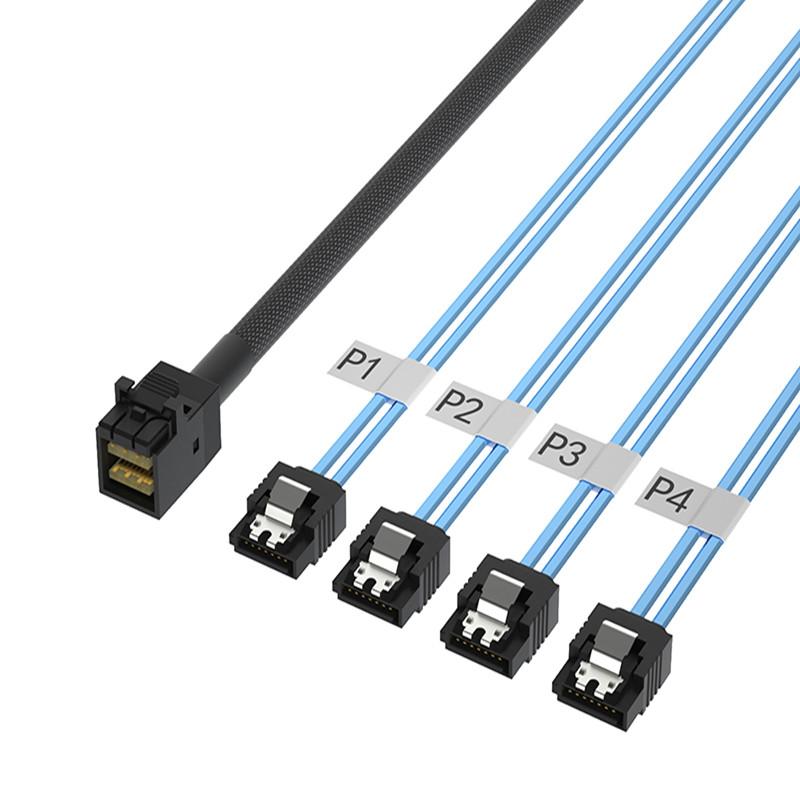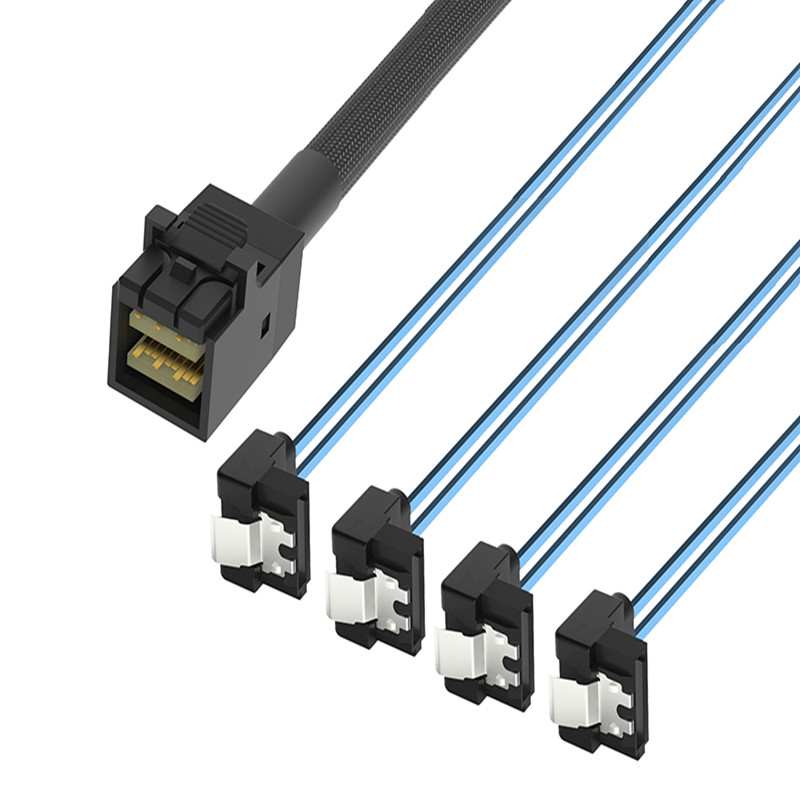In the field of big data transmission and storage, using Mini SAS HD Int SFF8643 to 4 SATA cable is crucial for seamless connectivity. However, confusion often arises when it comes to understanding the different types of cables required for SAS to SATA connections. Skyward Telecom (BDC Cable Limited) is a leading big data transmission and storage provider, offering a range of products widely used in various fields such as Ethernet, data centers, cloud computing, high-data computer clusters and smart homes.
To simplify understanding of these cables, it is important to note that if the host controller side is a SAS connector (SFF-8470) and the target side is a SATA drive, a SAS to SATA forward breakout cable is required. Conversely, if the motherboard/host controller side is a SATA connector and the backplane is a SAS connector, a SAS to SATA reverse breakout cable is required. For SATA to SATA connections, use standard “SATA” cables.
Skyward Telecom (BDC Cable Limited) has been at the forefront of providing solutions for big data transmission and storage. Their products, including the Mini SAS HD Int SFF8643 to 4 SATA cables, are designed to meet the evolving needs of the industry. With a focus on Ethernet, data centers, cloud computing, high data computer clusters, and smart homes, the company has established itself as a reliable provider of connectivity solut
The two breakout cables, forward and reverse, are not the same although they look outwardly to be the same, not withstanding the fact that some of these cables have the SATA portion of the cables at staggered lengths and some have them at fixed length.
Why are there two different cable types for SAS to SATA connectivity? An objective of the SATA system design was that SATA cables would have identical connectors at each end, and that SATA devices would have identical connectors independent of whether they were disk drives or disk controllers. This helps to make interconections foolproof and reduces the cost of cables.
If you ever look at a SATA to SATA cable they are identical and wired as a 1:1 cable. In a 1:1 cable pin 1 of end-A goes to pin 1 of end-B, pin 2 to pin 2, pin 3 to pin 3, etc. If you were to look at the SATA connector on a host-controller or motherboard and the SATA connector on a disk drive they look the same, and are physically the same, but each are wired differently.
A SATA connector has 7 pins. Two of the pins make up the receive pair and two of the pins make up the transmit pair. The other three pins are all used for ground signals. If a 1:1 (“straight-through”) SATA to SATA cable is to work, then the receive pair can not be the same pins on each of the two device connectors (Host vs disk)! If they were the same pins then we would need what is generally referred to as a “cross-over” cable. The “Absolute Rule” is that the transmit pins on one side must connect to the receive pins on the other side and vice versa. This is true for PC-PC RS232 connections, Ethernet Connections, SATA connections, and almost all types of serial connections which are duplex, i.e. separate receive and transmit cables.
All SAS connectors have their pins structured the same way no matter if they are on a host controller card, or a SAS backplane. Since for each port of the four that make up the SFF-8470 connector the transmit pins and the receive pins are physically in the same location, and we must connect SAS transmit to SATA receive and SAS receive to SATA transmit (for each port); the cables must be different depending on whether the SATA connector is on a disk drive or a Motherboard/Host-Controller.
A SAS to SAS cable must therefore be a “cross over” cable to connect the transmit pairs of a port to the receive pairs of the corresponding port on the other side.
Post time: Mar-19-2024







